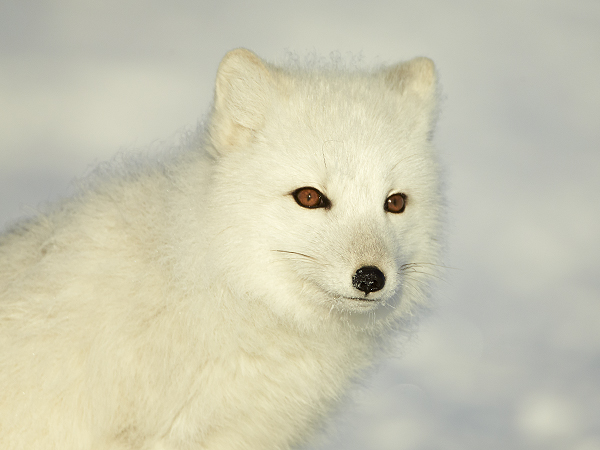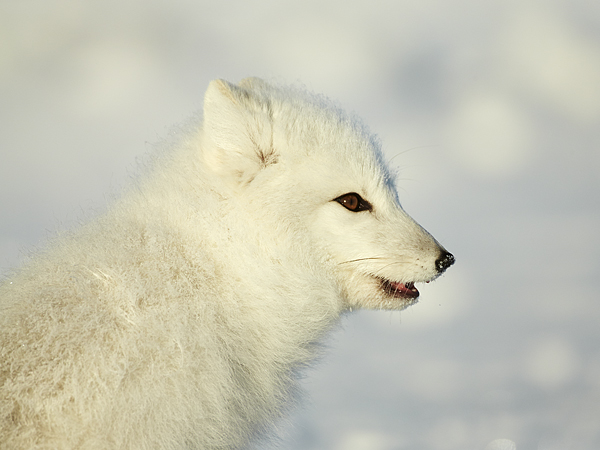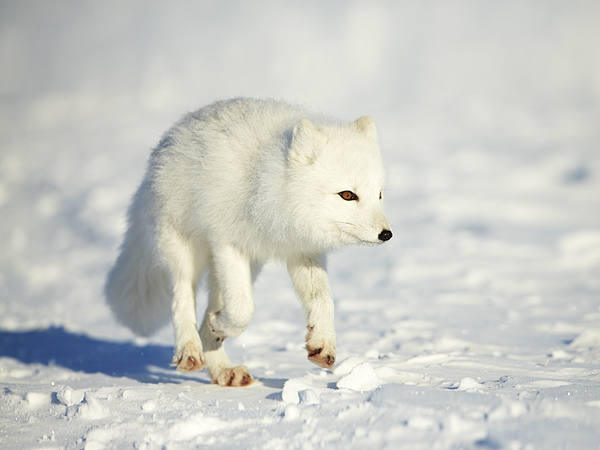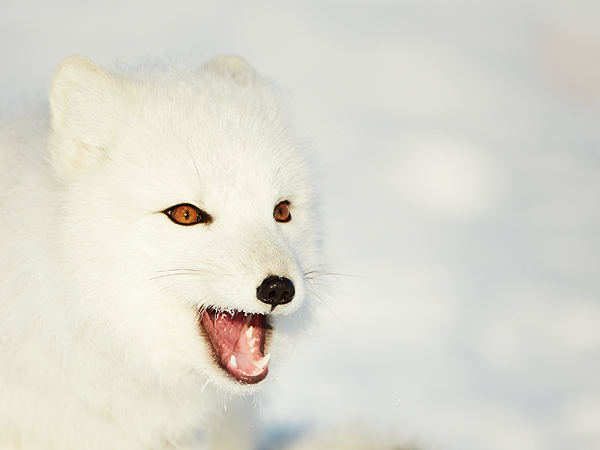| The Arctic Fox |
|
Many animals and birds change colour depending on the season, and this is especially true in the far north where many get a white winter coat so that they blend in with the snow. This can happen as far south as Scotland where Mountain Hare and Ptarmigan go white for the winter. It also happens further north across Europe and North America where species such as the Arctic fox also have a white winter coat. As a wildlife photographer, it's always good to get images of both the summer coat and of the winter coat, but it's the white winter coat that appeals to most and can look really good in images. The Arctic Fox has a large geographic range including Europe and North America, it's range is circumpolar. It is found in good numbers across the vast wilderness areas of Canada, Greenland, Russia, etc. and its numbers are estimated to be several hundred thousand. I have seen them before in Iceland, where it is the only land mammal which is native to Iceland, but during my visits to Iceland, but only briefly as they run across the road at a distance. It is much rarer in Scandinavia where the numbers in Norway, Sweden, and Finland are thought to be as low as a few hundred. Almost all mammal species need to be hardy to survive, but Arctic Foxes live in some areas of the high Arctic where the temperature regularly drops to - 60 degrees C, making them one of the most cold tolerant of all the mammals on the planet. The colour of the coat varies from grey brown during the summer months when they live on the tundra though to almost pure white when everywhere is covered in snow. They are smaller than the Red Fox that we are used to in Britain and are about 80 to 110 cm in length with the males about 10 to 20 cm longer than the females. In the wild they live between 3 and 5 years. |
 |
|
The number of Arctic Foxes varies a lot from year to year, and this is almost entirely due to the amount of food that is available. Their main food source is Lemmings, although they also eat Voles, eggs, carrion and many other things they can find. The majority of Arctic Foxes that I have seen have been in Canada, we were very lucky during our visit to Churchill, as we saw over 20 Arctic Foxes during our stay, this resulted in many images of which a selection are shown on this page. |
 |
 |
| The above images show just how close we could get to Arctic Foxes in Churchill in Canada. During our visit we saw several dozen foxes both in the town and out on the tundra. |
 |
 |
 |
 |
 |
 |
 |
 |
|
The Northern Lights - According to Finnish folklore the spectacular light show of the Northern Lights is caused by the Arctic Fox. As the Arctic Fox runs across the snow the foxes tail brushing the snow causes sparks and these sparks create the Northern Lights. Link to my Northern Lights images |
 |
